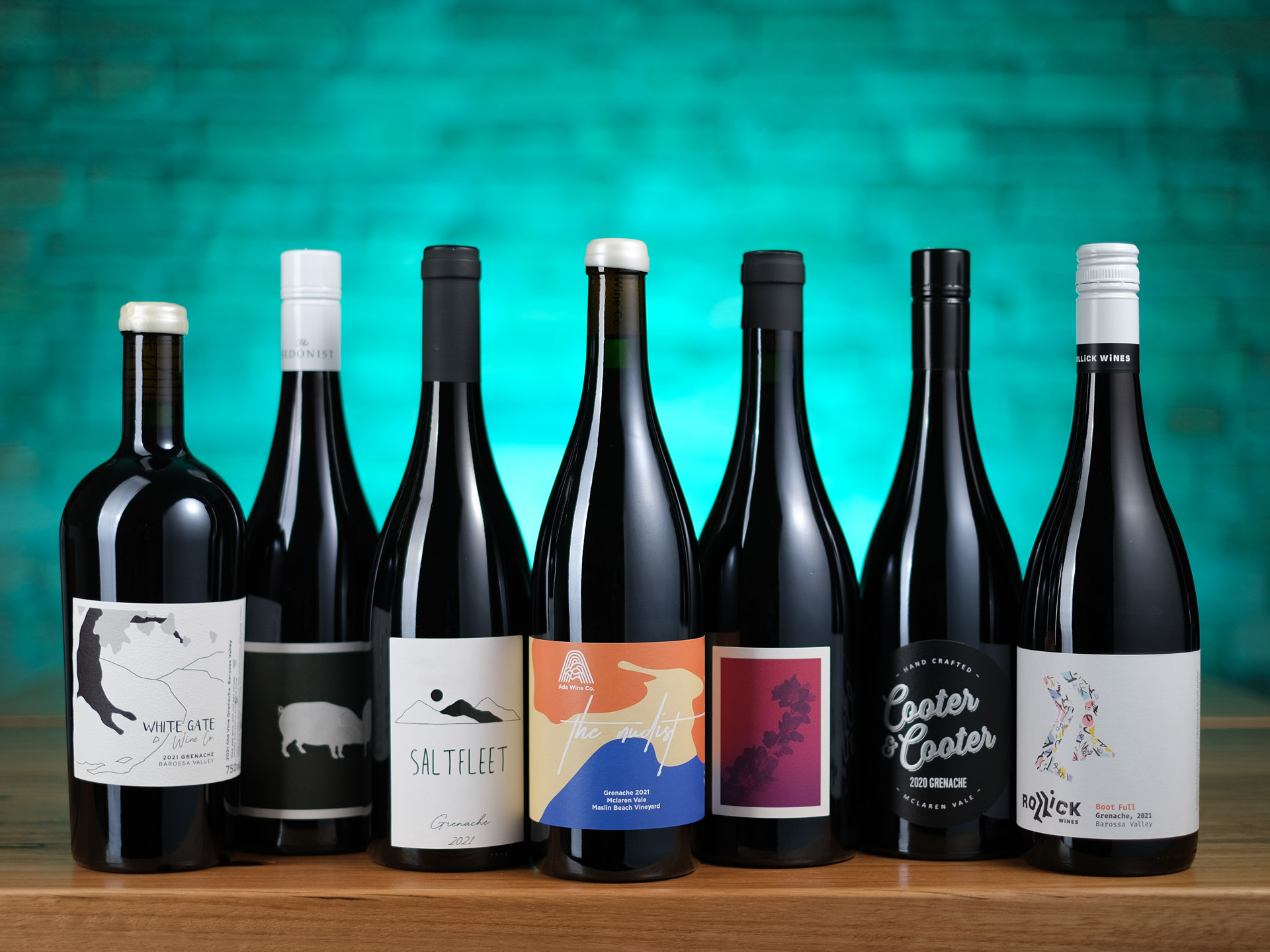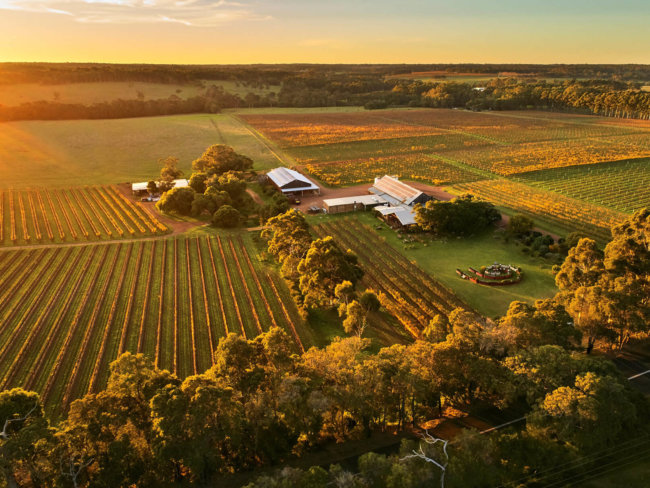Grenache is tough. Ruggedly so. Under extreme duress, in baking heat, with little water, it survives. Thrives even. But this kind of dogged persistence is not the stuff of glamour. Grenache doesn’t have the ethereal cachet of pinot noir, nor the regal cast of syrah. And even in its most famous vinous expressions, it is often accompanied, chaperoned by other varieties, both those perceived to be more and somewhat less noble. But grenache is far more than a reliable workhorse. And in South Australia’s McLaren Vale, it has found a home where solo expressions are breaking new ground.
Grenache is widely planted in Spain (where it is called garnacha), its most likely place of origin, crops up as cannonau in Sardinia, vernaccia nera, alicante and tai rosso in central and Southern Italy (though they are treated as distinct varieties due to centuries of isolated farming), and naturally is well established as the prime force in the Southern Rhône, being the principal components of Côtes du Rhône rouge and Châteauneuf-du-Pape rouge. In Australia, it was one of the first varieties planted (coming across the seas in 1832 as part of the Busby Collection), and some of the earlier vines (1840–50s) are still producing commercial crops today, making them the oldest grenache vines in the world to do so.
In Australia, it was one of the first varieties planted (coming across the seas in 1832 as part of the Busby Collection), and some of the earlier vines (1840–50s) are still producing commercial crops today, making them the oldest grenache vines in the world to do so.
It is no wonder that Grenache vines were popular then, given that the variety had already proved that it thrives in warm, dry environments. South Australia certainly fit that bill, with grenache becoming somewhat of a staple, though perhaps its durability was more celebrated than its personality. Grenache was also a most suitable canvas for fortified wines, which were the dominant force in the wine industry during the first half of the 20th century.
![]()
Grenache on bush-vines in McLaren Vale. Image courtesy of D’Arenberg.
It wasn’t until the 1960s that consumers began to turn towards table wines, but this gradual reversal of tastes didn’t see grenache emerge from the shadows, even though it was the nation’s most widely planted variety at the time. Indeed, grenache declined considerably, shrinking from a monopoly to somewhat of a bit player, with many old to ancient vines grubbed out, and next to none planted, while the area under vine devoted to varieties like shiraz skyrocketed.
Although the Barossa lays claim to many distinguished grenache vineyards, and Barossans would likely argue that it is the home of the country’s finest expressions, McLaren Vale is widely seen as the best territory for the variety (although that territory is widely varied, with an array of soil types, altitudes, aspects and mesoclimates in play). Indeed, it has been an emblematic variety of McLaren Vale for some time, but this perceived position has in reality been far eclipsed by Australia’s dominant variety: shiraz. In McLaren Vale, grenache has long been an afterthought, often relegated to blends (not that there’s anything wrong with blends) or just dealt with in a way, both in the vineyard and winery, that didn’t do full justice to the fruit. But much has changed.
McLaren Vale is seeing a developing interest outside the mainstays of shiraz, grenache and cabernet sauvignon, with Mediterranean varieties, like vermentino, fiano, nero d’avola and sangiovese, making somewhat of an impression, but it is the reinterpretation of grenache that is perhaps providing the most excitement in the Vale at present. Grenache does have an advantage, though, given that its presence in the Vale stretches right back to some of this country’s first forays into viticulture. Today, that means there is an enviable resource of mature, significantly old and ancient vines to work from. And while grenache is being planted again, meaning the quite lowly 1,500 hectares (nationally, on 2015 data) is on the up, the older material is by far in the majority, with much fruit from venerable vines ending up in some very accessibly priced bottlings.
![]()
Bush-vine grenache vineyard in McLaren Vale. Image courtesy of D’Arenberg.
Today, grenache in McLaren Vale is undergoing something of a renaissance, with it being a significant focus of many top producers. It still accounts for only about 5 per cent of McLaren Vale’s annual crush (which is 15 per cent of the national crush of the grape), compared to 60 per cent for shiraz, but the quality-driven movement seems to be finally prosecuting grenache’s case on its merits. Ever curious, we thought it best to put this to the test with line-up of some of the finest names in the game, both the traditional and the avant-garde.
As usual, the panel consisted of six of the country’s finest tasters, makers and thinkers, with a brief to find the wines that compelled the most. This was not an exercise in technical perfection or to champion one style over another, nor was it a search for profundity. Rather, the aim was to find wines of interest and character that reflected variety and place.
![]()
Lyndon Kubis, Sarah Andrew, Gabrielle Poy, Steve Webber, Jane Lopes and Wiremu Andrews, tasting at Hotel Esplanade, St Kilda. Photograph by James Morgan.
Our panel was made up of: Sarah Andrew DipWSET (Honours), National On-Premise Business Manager for the House of Fine Wine; Gabrielle Poy DipWSET, wine buyer City Wine Shop, educator European Group; Steve Webber, Chief Winemaker at De Bortoli, Yarra Valley; Lyndon Kubis, owner of six wine bars/enotecas, including Toorak Cellars and The Alps; Jane Lopes Wine Director at Attica, and author; and Wiremu Andrews, sommelier at Point Leo Estate and director of Dearth of a Salesman. All wines were tasted blind.
![]()
Blind tasting McLaren Vale grenache. Photography by James Morgan.
The Overview
There’s considerable baggage that comes with South Australian grenache, with all tasters having as much affection as they did trepidation for the variety, remembering different times. “I love grenache, but still I approached this tasting slightly scared, fearing a bombardment of jubey, overly-confected, out of control wines that would end my day early,” remarked Kubis. “Not to be,” he continued, “the quality in this line-up was sensational bar a couple of outliers.”
Webber went in to the tasting looking for wines with “a bit of charm, softness and elegance,” which is something one might not have expected to find 10 years ago. “I thought they were very good actually as a range of wines and it really did surprise me,” he continued, “I noted some underripe edges on a few wines, but my favourite wines were almost pinot-like.”
These ‘prettier’ wines were joined by more robust offerings, as Andrews remarked: “There seemed to be two distinct stylistic streams which pervaded throughout the tasting: slightly confected, high-toned fruit wines, which were showing attractive semi-carbonic and primary fruit, usually in the red/blue fruited spectrum. The other stream consisted of concentrated wines with black fruits to the fore and more emphasis on oak and cellaring potential.”
Lopes also noted a diversity of expressions, with perhaps the mid-swing of the style pendulum producing the most rewarding results: “There were a variety of styles, some more to my liking than others, but I’m sure all of them would have their place with certain audiences. Some were quite traditional: extracted, oaked, and eucalyptus-laden. Others were bright and light, displaying prominent bunchy and green notes. The ones I found most successful struck a balance, with a generosity of fresh, red fruit that didn’t look thin or dense.”
As Webber and Lopes mentioned, whole bunch fermentation and oak were used to varying levels of success, as did Andrew. “A few wines did not balance the whole bunch or oak regime overly well,” she said, “but these did not lower the overall impression of grenache in Australia which is really exciting.”
Although oak use was a subject brought up frequently, the number of wines marked by oak, and new oak in particular (a notoriously difficult proposition for grenache), were in the minority, which many panellists saw as a refreshing change. As was the general absence of excessively confected and stewed characters that had previously been a feature.
Asked about what had changed across the board with grenache in McLaren Vale, Andrew remarked that she felt 10 years ago or so that many makers were treating grenache like shiraz, and that a better understanding and appreciation for the grape was resulting in vastly better wines. “What resonated most was the structural definition and lack of warmth/heat that can be associated with a warm climate and late ripening variety,” she said. “A recurring theme of freshness and vitality was seen right throughout each bracket with fruit purity and restrained power being constant notes,” concurred Kubis.
Although there were six vintages featured in the tasting, 2017 and 2018 were the most heavily represented. “The wines from the cooler 2017 vintage seemed to offer more structure and less heady tones. They also seemed to have a herbal edge which was a nice counter to the ripe red fruits (when handled correctly),” Poy commented, while reflecting that “the warmer 2018 seems to be a standout grenache vintage, letting the exuberant side of grenache shine through.” Kubis also saw a distinct sub-regional division: “My personal bias for freshness and elegance saw my top wines leaning toward the Blewitt Springs sub-zone of McLaren Vale rather than the more bold and powerful examples from the valley floor.”
Overall, the general impression was that the state of McLaren Vale grenache was in fine health, with fruit handled with increasing deftness, producing wines of distinctive individual character, from the bright and fragrant to the more commanding and age-worthy. Once again, over half of the wines shown were selected on the panellists’ top-six lists, but several wines outside of these were commented on favourably.
“…A lot of these wines I have had before, and I think there are some wines I have really liked in the past – I still liked them in this tasting – but didn’t make my top six. I think you can see your biases at work, going into a blind tasting thinking these are the styles of wine I like and not putting them at the top.”
– Jane Lopes
The Top McLaren Vale Grenache Wines
![]()
2017 Angove ‘Warboys Vineyard’ McLaren Vale Grenache $44
In our panel tastings to date, this is the first wine to be chosen by two tasters as their top wine, with both Lopes and Poy nominating it as their first pick. It also received cross support, with Andrew selecting it in her top six. “There was just something so satisfying and pleasurable about this wine. It had a hint of VA on the nose. Also, on the nose, the fruit had a slight dried quality to it without feeling tired at all. But on the palate, the fruit was fresh and vibrant, lush and ample, long and complex,” said Lopes. “Pretty florals on the nose; musk and rosehip lead into a warming core – a grenache trademark. Savoury tones on the palate of red earth and red bricks temper the florals. Tannins are quite sleek. This is a charming style,” reflected Poy. Andrew commented on the “stewed fruit with Christmas spice including nutmeg and cinnamon,” noting the “drive poise and length,” calling it a “delightful varietal definition in a savoury context.”
![]() 2017 S.C. Pannell ‘Old McDonald’ McLaren Vale Grenache $60
2017 S.C. Pannell ‘Old McDonald’ McLaren Vale Grenache $60
One of two Pannell wines in the tasting, this received support from Lopes, Poy and Andrew. Poy called it, “Youthful and bright,” and that it “slowly unfurls revealing subtle nuances.” Andrew noted “youthful aromas of raspberry, strawberry and cherry fruits,” while Poy saw “notes of bay leaf, dark red raspberries and pepper.” “The texture was lovely on this wine: supple and layered,” said Lopes. “Great length, with a subtle minty/herbaceous note on the finish.” Andrew noted the “ripe fine tannins and a warming glow on the finish,” while Poy thought that “Its vibrant personality on the palate makes it a delicious drink now, but it also would gain complexity and depth with a few years of age.”
![]() 2017 Thistledown ‘Sands of Time’ McLaren Vale Grenache $75
2017 Thistledown ‘Sands of Time’ McLaren Vale Grenache $75
This was also one of two wines for this producer in the tasting, with the other Thistledown wine also selected by one of the panellists. This was nominated by Andrew, Lopes and Webber. Andrew found it “youthful in the glass, a touch reductive,” with “subtle red fruits and spice.” She found the “texture is furled and tightly wound initially but slowly opens to a spicy and weighted fruit intensity on the mid to back palate.” Lopes noted that “The fruit leans a bit toward the purple, reduced side of the spectrum on the nose,” but that “On the palate, the fruit is a bit more restrained than many in the flight; acid and tannin play more heavily.” She found that “the softness and generosity of Grenache is still coming through, providing a really nice contrast and balance.” Webber commented on it being “imperfect,” though “interesting” for it, also noting a coolness and some aldehydes.
![]() 2017 Yangarra ‘Ovitelli’ McLaren Vale Grenache $50
2017 Yangarra ‘Ovitelli’ McLaren Vale Grenache $50
This found favour with Lopes, Andrews and Poy. Lopes found it “another wine with great textural complexity,” with the fruit “soft and supple up front – red and slightly black,” which “then faded to a gritty-crushed velvet texture.” Andrews noted the “exotic aromas with a peach iced tea and bitter orange twist.” He also commented on the texture: “Silken texture, red apple skins, classy fruit, subtle spice and looooong.” As did Poy: “The texture on this wine is a standout, its fleshy core is lined with silky tannins that flow through the palate. This tactile wine offers a beautiful mix of flavours. Very delicious!”
![]() 2018 D’Arenberg ‘The Derelict Vineyard’ McLaren Vale Grenache $29
2018 D’Arenberg ‘The Derelict Vineyard’ McLaren Vale Grenache $29
Andrew put this at the top of her list, while it featured in Andrews’ top six. Noting the “deep intensity with youthful hue,” Andrew commented on the notes of “plum, cherry and bramble.” She found that the “tannins are drying but focused and completely supported by fruit weight and intensity,” calling it, “brooding,” while “a graphite profile shines from nose to palate and a grippy texture on the palate enhances rather than distracts – the finish is long and focussed.” This was one of two D’Arenberg wines Andrews picked in his top six: “Big, deep, intense plummy fruit with a graphite core. Old vines. Slick, confident strutting around with chest out.”
![]() 2018 Geddes ‘Seldom Inn’ McLaren Vale Grenache $25
2018 Geddes ‘Seldom Inn’ McLaren Vale Grenache $25
This was Webber’s top wine of the tasting, with him reflecting it in his typically pithy way: “Spice, grace, perfume, gentle tannin, pinot-like.” Poy also found favour with this, including it in her top-six list: “I initially overlooked this wine, but something kept me coming back. And I’m glad I did. A very poised and elegant expression of grenache. This is unadulterated, boasting a beautiful depth of red fruits and florals with a subtle sage edge. It’s tightly wound, fine and very long.”
![]() 2017 Longline ‘Albright’ McLaren Vale Grenache $26
2017 Longline ‘Albright’ McLaren Vale Grenache $26
This was Kubis’ top wine of the tasting: “Aromatically Bursting with fresh red fruit like freshly picked raspberries and strawberries. In the mouth this is complex and layered with savoury characters like cedar and soil alongside sweet baking spice. Volume in the mouth and persistence, so much detail, almost a hydrating quenching quality. Length for days, A+, Goal!, 6-and-out, Home Run, Swish, Ace, Strike!”
![]() 2013 D’Arenberg ‘The Blewitt Sands Grenache’ McLaren Vale $105
2013 D’Arenberg ‘The Blewitt Sands Grenache’ McLaren Vale $105
The second of the two D’Arenberg wines in the tasting, with both being selected by Andrews, and this being his top wine overall: “My pick of all the wines by a small margin… It exhibited drive, power, and clarity. Delicious red fruits and an irresistible lactic note underpinned the nose. The tannins built brilliantly through the wine and crunchy cranberry and tart strawberry flavours combined to produce a taste that was confected and nervy simultaneously.” It was also picked in Kubis’ top-six: “Bright, fresh and juicy in the mouth, lots of life and energy. Firm but not aggressive tannin and lingering length – drink- and think-ability in spades.
![]() 2018 Bondar ‘Rayner Vineyard’ McLaren Vale Grenache $38
2018 Bondar ‘Rayner Vineyard’ McLaren Vale Grenache $38
Both Lopes and Kubis placed this in the top-six lists. Lopes: “Elegant. Soft and silky texture with some pleasant chewiness to the tannins coming through on the back palate. Ripe red and blue fruit that stayed fresh and vibrant. A touch of a green, savory quality that looked more herbal than it did like stems or eucalypt. Complex and long.” Kubis: “Medium in colour, fruit profile is lifted and lively, freshness abounds, tight chalky tannin. That grip is firm but fair, lots of persistence and the energy continues a long time after the wine leaves the mouth.”
![]() 2018 Aphelion ‘The Confluence’ McLaren Vale Grenache $35
2018 Aphelion ‘The Confluence’ McLaren Vale Grenache $35
Both Webber and Andrews included this in their top-six lists, with the latter noting the “Black tea aromas with violets, confected plums and bitumen.” He found it had “generous, growing tannins, although still gentle mouthfeel.” Webber noted the “lovely spice and charm” and commented on the “gentle tannin.”
![]() 2016 Reynella McLaren Vale Grenache $70
2016 Reynella McLaren Vale Grenache $70
Andrews found this “intensely confected on the nose with flecks of nutmeg adding a spiced warmth,” while “the generosity of fruit on the palate was balanced out nicely with a tightly coiled acid and tannin interplay which really helped the wine to gel.” Andrew found “bright primary red fruits coupled with a hint of raspberry liquorice on the nose,” with a “savoury mouthfeel and round plushness to the texture.” She found that, “the finish is long and supported by fruit weight and intensity – varietal with lovely regional hallmarks.”
![]() 2017 Bekkers McLaren Vale Grenache $80
2017 Bekkers McLaren Vale Grenache $80
Lopes: “Super-expressive nose that didn’t owe its exuberance to any one quality, but rather a combination of lively fruit, herbal undertones, floral notes, and just a touch of VA. A perfect Grenache structure: juicy fruit up front that is balanced by alcohol and soft tannins on the back. The fruit is abundant without ever feeling overdone or tired. A touch of pepper and fresh herbs add complexity.”
![]() 2019 Gemtree ‘Small Batch’ McLaren Vale Grenache $50
2019 Gemtree ‘Small Batch’ McLaren Vale Grenache $50
Andrew: “Medium intensity on the colour profile and nose. Youthful with vibrant varietal definition (violets, cherry, plums, spice and a juniper lift). Textbook new world Grenache with supple tannins and lovely savoury pull through that guides the fruit sweetness. It could be missed in a rapid fire tasting as presents as super young and a little bit shy – understated elegance coupled with the varietal definition.”
![]() 2012 Clarendon Hills ‘Clarendon’ McLaren Vale Grenache $74.99
2012 Clarendon Hills ‘Clarendon’ McLaren Vale Grenache $74.99
Andrews: “The Clarendon Hills 2012 Clarendon was a hedonist wine, brooding and flexing at once. An array of black fruits and liquorice with pencil shavings and pitch adding to its depth. For such a powerful wine, the texture was really silky, the tannins well integrated. At seven years old, this bottle was in its prime.”
![]() 2017 Yangarra ‘Old Vine’ McLaren Vale Grenache $35
2017 Yangarra ‘Old Vine’ McLaren Vale Grenache $35
Webber: “Riper, complex, perfumed, very good.”
![]() 2017 Samuel’s Gorge McLaren Vale Grenache $40
2017 Samuel’s Gorge McLaren Vale Grenache $40
Webber: “Pale, pinot-like, graceful, cool, stemmy.”
![]() 2017 Willunga 100 ‘The Hundred – Clarendon’ McLaren Vale Grenache $45
2017 Willunga 100 ‘The Hundred – Clarendon’ McLaren Vale Grenache $45
Kubis: “Bright ruby in colour, subdued nose that has hints of raspberry and strawberry. Nice control. Elegant and understated presence, it has leashed power but lingering flavour. Totally in balance, everything in its right place.”
![]() 2018 Aphelion ‘The Verdant’ McLaren Vale Grenache $40
2018 Aphelion ‘The Verdant’ McLaren Vale Grenache $40
Poy: “An inviting nose of earth, sweet spice and violets with subtle rosemary highlights. The core is packed with youthful and fresh fruit sitting alongside graphite tones. This sits on the darker side of grenache, packed with detail and depth.”
![]() 2018 Thistledown ‘She’s Electric’ McLaren Vale Grenache $60
2018 Thistledown ‘She’s Electric’ McLaren Vale Grenache $60
Steve Webber: “Perfume, charm, allure, fine.”
![]() 2018 Year Wines McLaren Vale Grenache $30
2018 Year Wines McLaren Vale Grenache $30
Poy: “Looser knit in style, a very drinkable and enjoyable grenache. Not one that needs to be destined for the cellar, this is a delicious in its youth showing heady floral notes and fine slippery tannin. A great barbecue wine that will be sure to impress a crowd.”
The Panel
Gabrielle Poy is a wine-buyer at the City Wine Shop and responsible for staff training across the European Group. She was a Len Evans Tutorial Scholar in 2010, and completed her WSET Diploma in 2015. Poy is a regular wine show judge and show chair.
![]()
Gabrielle Poy and Steve Webber
Steve Webber is the Chief Winemaker and General Manager of De Bortoli’s Yarra Valley estate. He has won a Jimmy Watson Trophy and been accorded many major awards, including Winemaker of the Year. He is a highly respected wine show judge, and was pivotal in revitalising what had become a much-derided show system into a celebrated one. Although classic cool climate varieties are his typical weapon, Webber has made a significant investment in Grenache, primarily in Heathcote.
![]()
Janes Lopes
Jane Lopes graduated from the University of Chicago with a degree in Renaissance Literature and a love for food, wine, and spirits. While taking a year off, Jane found a job in wine retail. She worked at the nationally-acclaimed cocktail bar, The Violet Hour, and in 2011, moved to Nashville to be the opening Beverage Director at The Catbird Seat. After moving to New York in 2013, Jane began working as a sommelier at Eleven Madison Park, helping to lift the restaurant to #1 in the world on the World’s 50 Best List. In 2017, Jane was recruited to run the beverage program at Attica. Her first book, Vignette, was published in 2019 by Hardie Grant.
![]()
Wiremu Andrews
Wiremu Andrews is the director of Dearth of a Salesman, representing small artisan wineries across Victoria, as well as working as a consultant, educator and sommelier for hire. He currently works on the wine team as a sommelier at the much-lauded Pt. Leo Estate.
![]()
Sarah Andrew and Gabrielle Poy
Sarah Andrew is the National On-Premise Business Manager for the House of Fine Wines. She is the Oceania Advisory Board Member for WSET, on the Advisory Board for Australian Women in Wine Awards, and Co President of Sommeliers Australia. Andrew holds the WSET Diploma with Honours, is a WSET Certified Educator, an A+ Wine School Educator for Wine Australia, a Certified Sommelier with the Court of Master Sommeliers and is currently studying for her Master of Wine.
![]()
Lyndon Kubis
Over the last decade, Lyndon Kubis has built a small empire of small wine bars. After working at Toorak Cellars for five years, he bought the business and has since expanded his armada of drink-in wine stores to include The Alps, The Hills, The Moon and Milton in Melbourne, and The Valley Wine Bar in Brisbane.






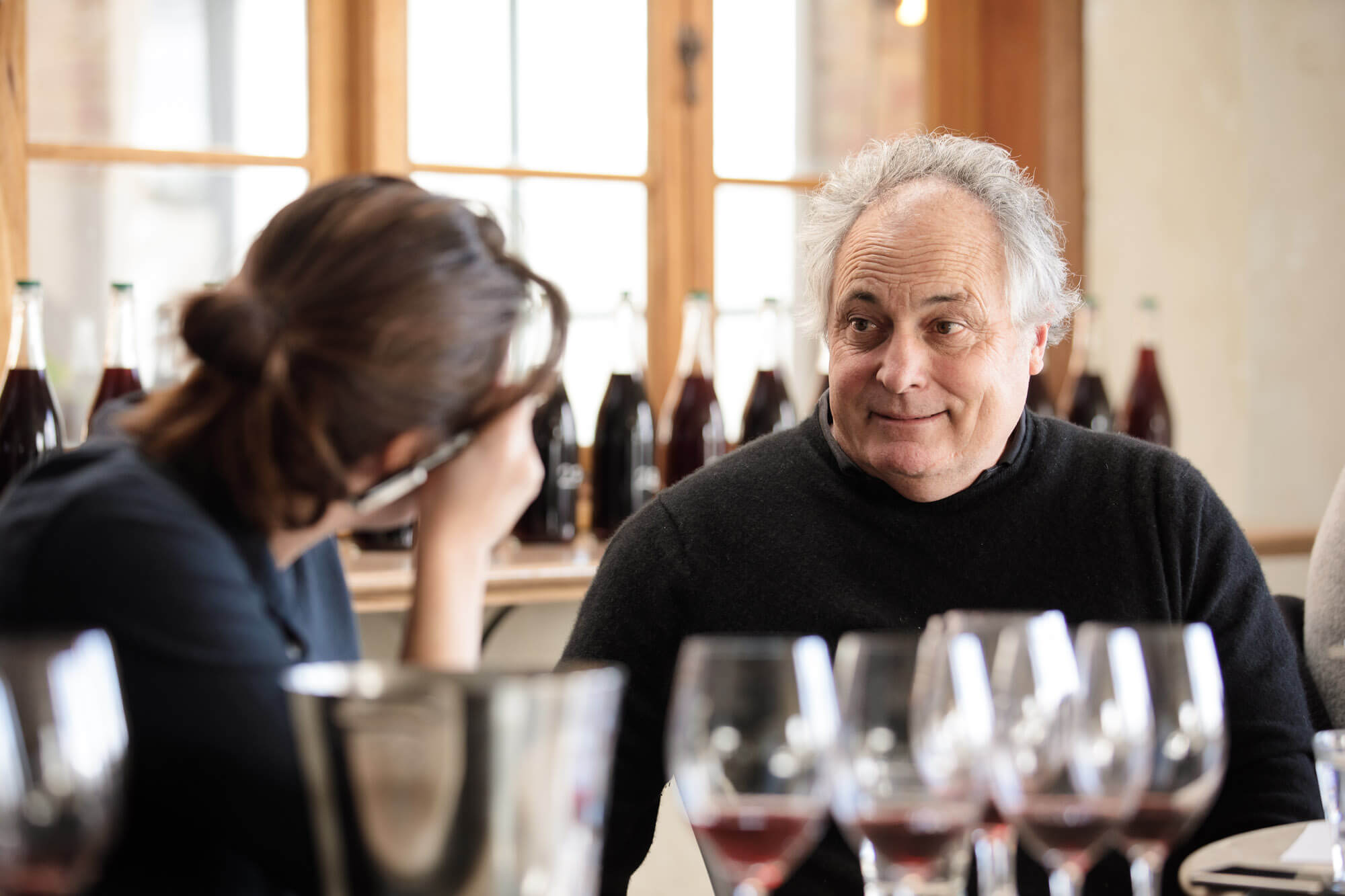


 2017 S.C. Pannell ‘Old McDonald’ McLaren Vale Grenache $60
2017 S.C. Pannell ‘Old McDonald’ McLaren Vale Grenache $60 2017 Thistledown ‘Sands of Time’ McLaren Vale Grenache $75
2017 Thistledown ‘Sands of Time’ McLaren Vale Grenache $75 2017 Yangarra ‘Ovitelli’ McLaren Vale Grenache $50
2017 Yangarra ‘Ovitelli’ McLaren Vale Grenache $50 2018 D’Arenberg ‘The Derelict Vineyard’ McLaren Vale Grenache $29
2018 D’Arenberg ‘The Derelict Vineyard’ McLaren Vale Grenache $29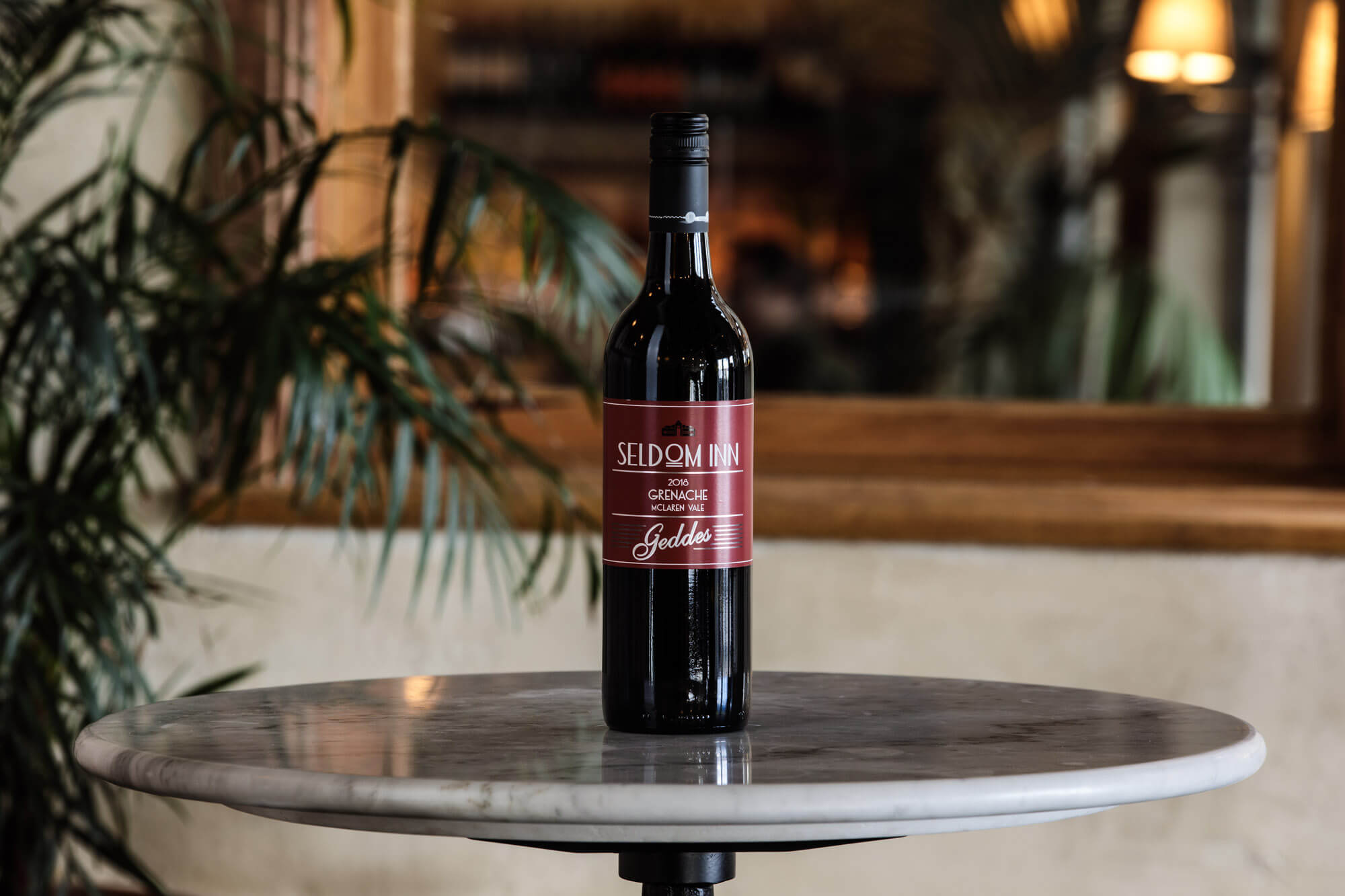 2018 Geddes ‘Seldom Inn’ McLaren Vale Grenache $25
2018 Geddes ‘Seldom Inn’ McLaren Vale Grenache $25 2017 Longline ‘Albright’ McLaren Vale Grenache $26
2017 Longline ‘Albright’ McLaren Vale Grenache $26 2013 D’Arenberg ‘The Blewitt Sands Grenache’ McLaren Vale $105
2013 D’Arenberg ‘The Blewitt Sands Grenache’ McLaren Vale $105 2018 Bondar ‘Rayner Vineyard’ McLaren Vale Grenache $38
2018 Bondar ‘Rayner Vineyard’ McLaren Vale Grenache $38 2018 Aphelion ‘The Confluence’ McLaren Vale Grenache $35
2018 Aphelion ‘The Confluence’ McLaren Vale Grenache $35 2016 Reynella McLaren Vale Grenache $70
2016 Reynella McLaren Vale Grenache $70 2017 Bekkers McLaren Vale Grenache $80
2017 Bekkers McLaren Vale Grenache $80 2019 Gemtree ‘Small Batch’ McLaren Vale Grenache $50
2019 Gemtree ‘Small Batch’ McLaren Vale Grenache $50 2012 Clarendon Hills ‘Clarendon’ McLaren Vale Grenache $74.99
2012 Clarendon Hills ‘Clarendon’ McLaren Vale Grenache $74.99 2017 Yangarra ‘Old Vine’ McLaren Vale Grenache $35
2017 Yangarra ‘Old Vine’ McLaren Vale Grenache $35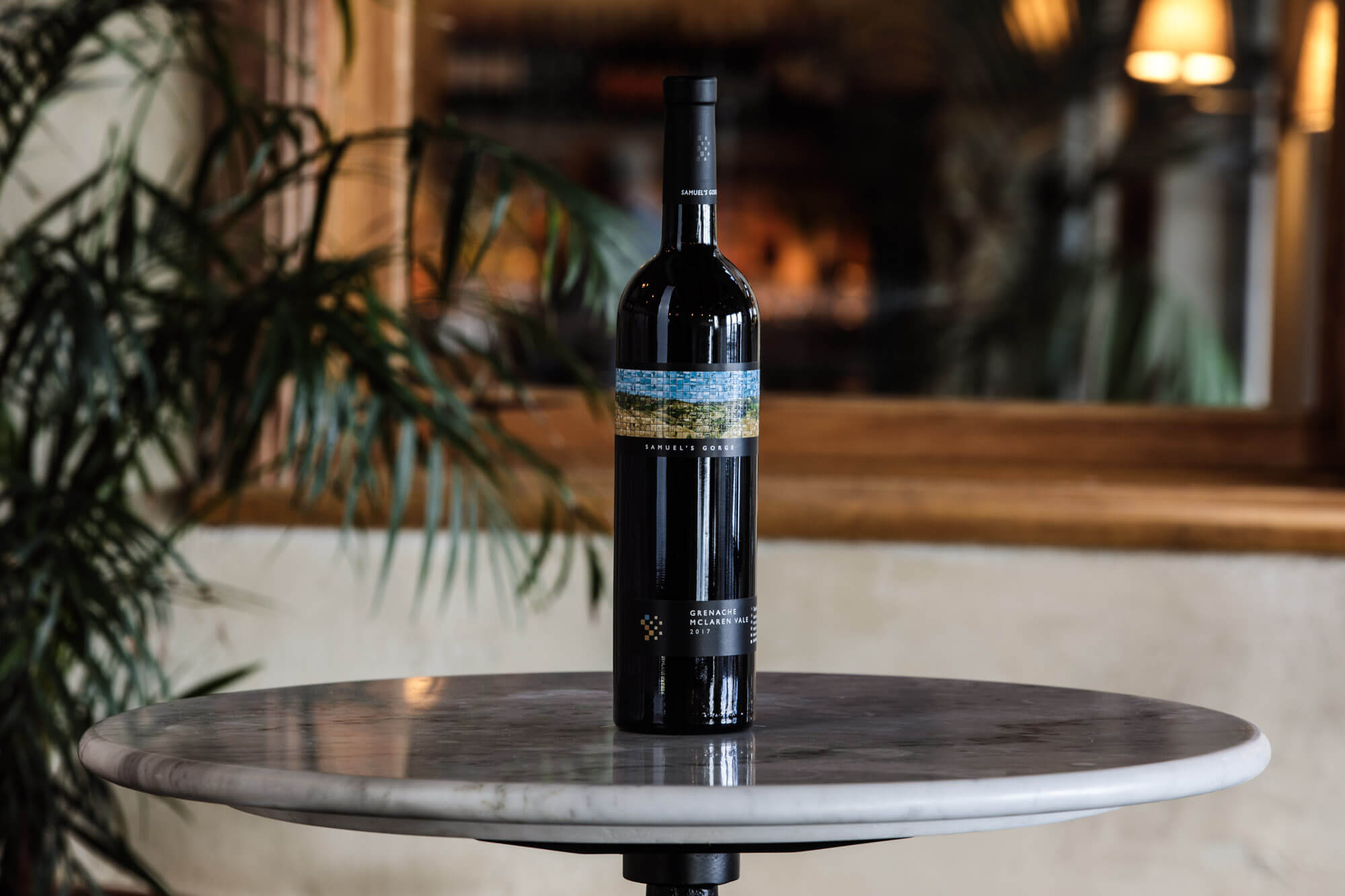 2017 Samuel’s Gorge McLaren Vale Grenache $40
2017 Samuel’s Gorge McLaren Vale Grenache $40 2017 Willunga 100 ‘The Hundred – Clarendon’ McLaren Vale Grenache $45
2017 Willunga 100 ‘The Hundred – Clarendon’ McLaren Vale Grenache $45 2018 Aphelion ‘The Verdant’ McLaren Vale Grenache $40
2018 Aphelion ‘The Verdant’ McLaren Vale Grenache $40 2018 Thistledown ‘She’s Electric’ McLaren Vale Grenache $60
2018 Thistledown ‘She’s Electric’ McLaren Vale Grenache $60 2018 Year Wines McLaren Vale Grenache $30
2018 Year Wines McLaren Vale Grenache $30




